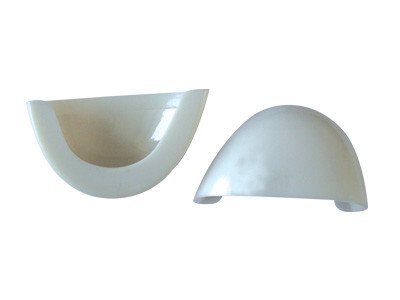- Main Page
- Boot Anatomy
- Boot Fit Guide - Western
- Boot Glossary
- Boot Leathers
- Boot Makers
- Boot Retailers
- Boot Styles - Western
- Boot Toes & Heels - Western
- Boot Styles - Work
- Country Music Stars
- Cowboy Hat Etiquette
- Cowboy Hats
- Cowboy Hats and Sizing
- Cowboy Sites
- Horse Sites
- Logger vs Lineman
- Steel Toe vs. Comp Toe
- Top Modern Westerns
- Top 100 Westerns
- Western Pages
Needed to read PDF's
Steel Toe vs. Comp Toe

Both steel toe boots and composite boots are designed to protect the feet. You may be wondering how you are supposed to choose between them. In order to make the best decision between purchasing steel toe boots and composite boots, you must first understand the difference between them.
Steel toe boots, as their name suggests, contain a piece of steel in the toe area of the boot for immense protection. Naturally, steel toe boots meet the ANSI safety requirements. After all, they are designated to protect the feet of electricians, construction workers, and other workers who function in a hazardous environment.
Unfortunately, some of these workers must regularly pass through security which may entail metal detectors. The metal within the steel toe boots can set off the metal detectors causing some annoyance and possibly wasting some time (if you have to be individually checked for instance). Therefore, if a worker does not have to pass through detectors, steel toe boots are an ideal choice.
Composite toe boots are lighter than steel toe boots and do not contain any form of metals in them. Instead, they contain a composite material in the toe portion of the boots. Composite materials include, but are not limited to, Kevlar, plastic, and carbon fiber. Composite toe boots also meet the ANSI safety requirements for shoes intended to provide the feet with added protection in comparison to boots without a safety toe.
However, composite toe boots are typically more suitable for people who have to pass through metal detectors, such as nuclear workers, security personnel, and airport workers. This is because composite boots do not set off metal detectors like steel toe boots because they are non-metallic.
There are two things you must know when shopping for either steel toe boots or composite toe boots: impact rating and compression rating.
The impact rating is a number that informs you of the amount of pounds of impact the shoes will protect against. For example, an I/75 impact rated pair of boots can withstand an impact of 75 pounds. The test done to determine the impact rating is done by dropping a weight from a certain height at a specified speed onto the boots. If the boots can withstand the 75 pound weight, they are labeled as I/75. The minimum impact rating for safety toe boots is I/50.
The compression rating is the number of loads the shoes can withstand before cracking or breaking. For example, a C/75 will guard against compressive loads of up to 2,500 pounds. A C/50 pair of boots can protect against compressive loads of up to 1,750 pounds.
In conclusion, when it comes to choosing between steel toe and composite toe boots, the major determining factor will be your job. Will you have to regularly walk through metal detectors? What dangers will you face on the job? How heavy is the equipment around you that could fall on your feet? What level of protection do you feel most comfortable with? Answering these questions can help you make the right decision.
Steel Toe vs. Composite Toe: Which is Best for Your Job?
When it comes to choosing work boots, the debate between steel toe and composite toe often sparks a lot of discussion. Each option has its unique advantages, and picking the right one could mean the difference between comfort and compromise on the job.
Whether you’re laying bricks, climbing scaffolding, or inspecting pipelines, the type of protective footwear you choose can greatly impact your day—and your safety.
What’s the Difference?
Let’s get down to brass tacks: the main difference lies in the material. Steel-toe boots feature a reinforced steel cap in the toe box, designed to withstand heavy impacts and compression. They're tough—no two ways about it.
Composite-toe boots, on the other hand, are made from non-metal materials like Kevlar, carbon fiber, or plastic. They’re lighter, often more flexible, and still offer excellent protection against workplace hazards.
But protection isn’t the only factor at play. Comfort, weight, and environmental factors also come into the equation. So, how do you decide?
Steel Toe: The Heavy-Duty Protector
Steel toe boots have been the gold standard in industrial footwear for decades. Why? Because they’re nearly indestructible. If you’re working in an environment where heavy objects could fall or roll onto your feet, steel-toe boots are your go-to choice. Think construction sites, warehouses, or manufacturing plants—anywhere where brute strength and durability are non-negotiable.
Strength and Protection: Steel can resist up to 75 pounds of impact or compression. That’s the kind of security you’ll want if you’re working around heavy machinery or materials.
Longevity: Steel-toe boots are built to last. They can handle the daily grind without breaking down as quickly as some other materials might.
However, there are trade-offs. Steel-toe boots are heavier than their composite counterparts, which can lead to fatigue over a long workday. They’re also more conductive, making them a less-than-ideal choice for electricians or workers exposed to extreme temperatures.
Composite Toe: Lightweight and Versatile
Now, if agility and comfort are more your speed, composite-toe boots might be just the ticket. Designed with lightweight materials, these boots are perfect for jobs that require a lot of movement or standing.
Lightweight Design: Composite toes can shave off several ounces compared to steel, which makes a huge difference when you’re on your feet for hours.
Non-Conductive: Working in environments with electrical hazards? While steel toe can still be safe if the metal is not exposed, composite-toe boots are usually your best bet.
They don’t conduct electricity, and they’re often rated for Electrical Hazard (EH) protection.
Weather Resistance: Unlike steel, composite materials don’t transfer heat or cold as easily, so your feet stay more comfortable in extreme temperatures.
That said, composite-toe boots generally don’t offer the same level of impact resistance as steel. If your job involves heavy lifting or the risk of significant foot injuries, you’ll want to weigh your options carefully.
Factors to Consider
No two jobs are the same. Before making your decision, think about these key factors:
Safety Standards: Check for certifications like ASTM (American Society for Testing and Materials) ratings. Both steel and composite toes can meet these standards, but be sure the boots you’re eyeing are up to code.
- Job Environment: Is your workplace indoors or outdoors? Do you encounter extreme temperatures, or work around electrical hazards? Your environment will heavily influence your choice.
- Weight and Comfort: If you’re constantly on the move, a lighter boot can reduce fatigue and improve your overall productivity. Steel-toe boots might feel cumbersome after an eight-hour shift.
- Durability: While composite materials have come a long way, steel still reigns supreme for long-term durability in rough conditions.
The Fit Factor
Let’s not ignore the elephant in the room—a boot is only as good as its fit. A poorly fitting boot can cause blisters, foot pain, and even long-term problems like Plantar fasciitis. When you’re trying on boots, wear the same socks you’d use on the job. Walk around, bend your toes, and pay attention to pressure points.
And don’t forget to break them in! Even the best boots can feel stiff right out of the box, so give them time to mold to your feet before heading into the field.
Final Thoughts: Which One Wins?
So, steel toe or composite toe—which is best for your job? The answer depends on what you value most. If you need uncompromising protection and durability, steel-toe boots are hard to beat. But if comfort, lightweight design, and versatility are higher on your priority list, composite-toe boots might be the smarter choice.
Ultimately, the best work boot is the one that keeps you safe, comfortable, and confident—day in, day out. And with the right pair of boots, you’ll be ready to tackle whatever challenges come your way.
Find me on Social Media
 |
Don't forget to bookmark me to see updates.. Copyright © 2000 - 2025 - K. Kerr Most recent revision November 19, 2025 07:05:46 AM
|











